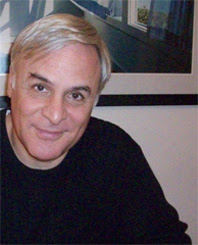 |
| The $742 Million Question |
Who should pay for the extra Decommissioning money, not yet collected?
Since the operators of San Onofre made the financial decision to shut it down prematurely, all decommissioning fees not already collected for Units 2 and 3 by 01/31/12, should be paid by the operators of San Onofre, not ratepayers!
Also the California Public Utilities Commission should required SCE put the Decommissioning of San Onofre out for public bid, instead of just giving the mega billion dollar job to SCE. California ratepayers cannot afford a sole source bid when so many International Companies with nuclear expertise are looking for work.
A public bidding process will save California ratepayers huge amounts of money, money which should not end up in SCE’s shareholders pockets. This single project has the potential to jump start our economy, we cannot allow the CPUC to short circuit our states bidding process by not putting this job out for bid!
|
Decommissioning Costs as of 1/1/2012
|
SONGS 1 $ Million
|
SONGS 2 $ Million
|
SONGS 3 $ Million
|
|
Radiological Costs
|
183.3
|
1,273.6
|
1,262.4
|
|
Site Restoration
|
10.7
|
417.0
|
535.5
|
|
Fuel Storage (Including ISFSI Decommissioning)
|
11.2
|
385.3
|
368.3
|
|
Estimated Total Budget 2009 (See Note 2)
|
N/A
|
1,791
|
1,868
|
|
Total Collected 10/31/12 (See Note 1)
|
291.4
|
1,638.1
|
1,865.4
|
|
Total Projection 1/1/2012
|
205.2
|
2,079.5
|
2,166.2
|
|
Estimated Loss Due To Poor RSG Design/Operation
|
86.2 Previously Overbilled
|
441.4 Shortfall
|
300.8 Shortfall
|
-
SCE Letter to NRC (2012) https://docs.google.com/folder/d/0BweZ3c0aFXcFZGpvRlo4aXJCT2s/edit?docId=0BweZ3c0aFXcFNHF2ZDVncy1GM0U
-
Background
The purpose of the Nuclear Decommissioning Trust Funds is to mitigate for ratepayers the high cost of decommissioning nuclear power plants at the end of their lives by collecting reasonable fees over a long period of time. The CPUC directs the investor owned utilities to collect a regular Decommissioning fee on customers’ monthly electric bills for Edison and SDG&E’s San Onofre Plant (30 years old) and PG&E’s Diablo Canyon Plant (28 years old). The expected life of a nuclear power plant is 40 years.
$5.2 billion of ratepayer collection is currently invested with the Trust Funds.
At current liquidation value, combined Decommissioning Trust Funds are ~90% funded. The Trust Funds are currently invested in equities (60%) and investment grade fixed income securities (40%). D.87-05-062 established nuclear decommissioning trusts for funding future decommissioning of the utilities’ nuclear units. Each nuclear plant has decommissioning trusts and a committee that oversees the trust fund; Under Public Utilities Code § 8326, SCE is required to provide a decommissioning cost estimate that includes, among other things,
an estimate of the costs of decommissioning, and
a description of changes in regulation, technology, and economics affecting the estimate of costs.
As SCE explains, and as TURN’s witness Lacy acknowledges, the costs to decommission a nuclear facility include the costs to
store the spent fuel onsite or offsite until it is removed by the DOE;
remove residual radioactivity from the site, including from the spent fuel storage facility, to levels required to terminate the NRC license and to release the site for unrestricted use; and
remove non-radiological structures, systems, and components as required to leave the site in a safe condition, or as otherwise mandated by the state or the site owner.
The Utilities project that they will perform the actual decommissioning in three phases.
During Phase I, the Utilities will decontaminate, dismantle, and dispose of the units and the site common facilities. The Utilities will also continue to maintain the integrity and safety of the spent fuel while it remains on the SONGS site. The Utilities will maintain spent fuel in wet storage in spent fuel pools until it can be safely transferred to the SONGS 2 & 3 Independent Spent Fuel Storage Installation (ISFSI) or removed from the site by the U.S. Department of Energy (DOE). To safely store fuel in wet storage, the Utilities must maintain each plant system required for spent fuel pool operation until the fuel is removed. The Utilities will drain, de-energize, and secure all other plant systems. After the SONGS 2 & 3 spent fuel pools are empty, the Utilities will decommission the pools and their associated support structures and systems. The Utilities assume that by the time the SONGS 2 & 3 fuel has cooled sufficiently to be removed from the spent fuel pools, the DOE will have removed enough SONGS 2 & 3 fuel from the SONGS site that it will not be necessary to further expand the ISFSI pads or to construct additional Advanced Horizontal Storage Modules (ASHM) to accommodate that fuel.
During Phase II, the Utilities will monitor the ISFSI until the DOE removes the last spent fuel from the site, which is assumed to occur by 2051 based on studies developed from the DOE Acceptance Priority Ranking & Annual Capacity Report (DOE/RW-0567), dated July 2004.
During Phase III, the Utilities will dismantle and dispose of the ISFSI, all remaining site common facilities, and the remaining structural foundations; terminate the NRC licenses; and complete the final site restoration work.
Note: The Utilities do not own the site upon which the SONGS facility is located. Instead, they are authorized to use the site under several lease contracts and grants of easement from the U.S. Department of the Navy and the California State Lands Commission. To terminate these agreements, the Utilities are required to remove all improvements they installed or constructed on the site, except as agreed by the lessors/grantors, return the site to a condition satisfactory to the grantor, and return the site to the lessors/grantors.
Aging Nuke Plants On Fault Lines In Tsunami Hazard Zones = Fukushimas… Any Questions?
PLEASE Turn off a light for Fukushima USA / San Onofre

Continue reading →














